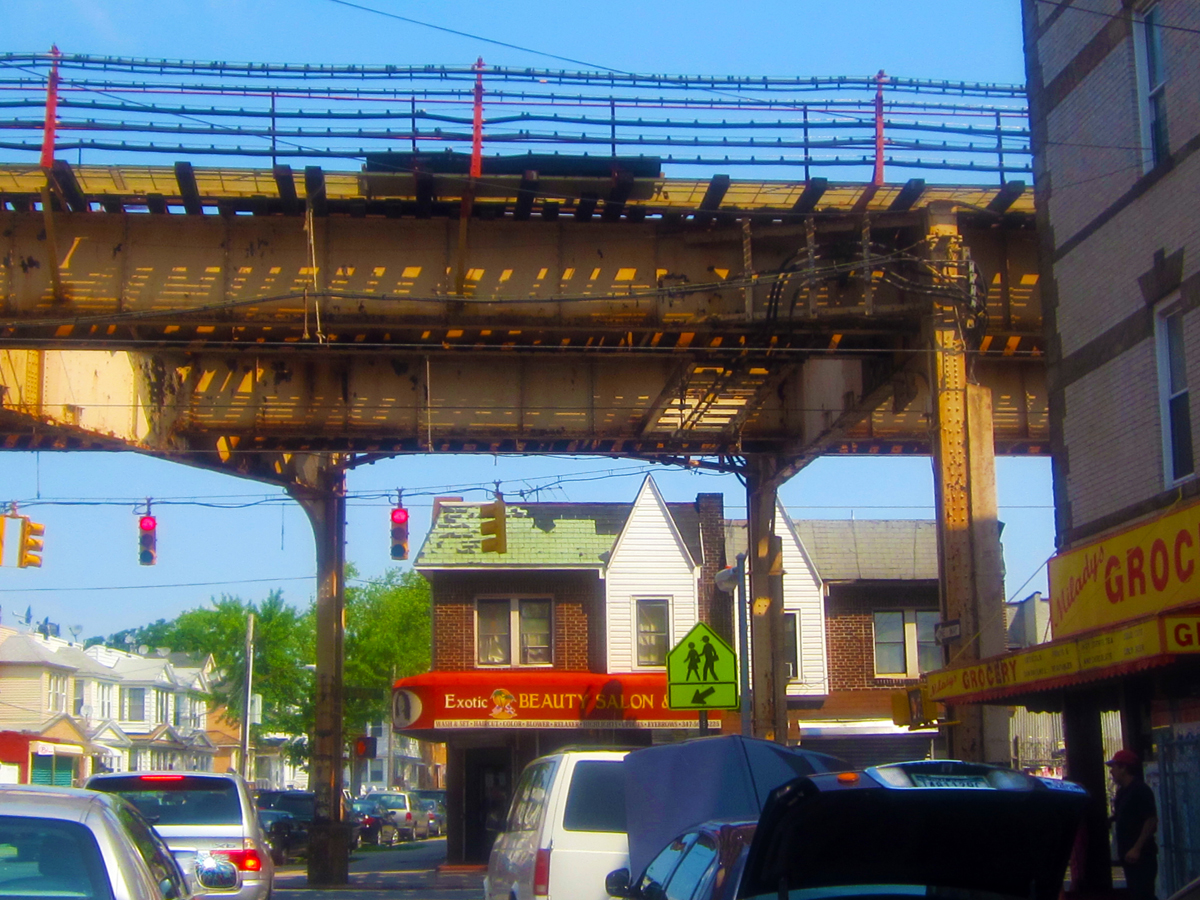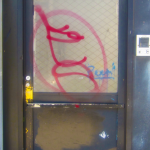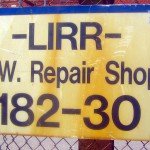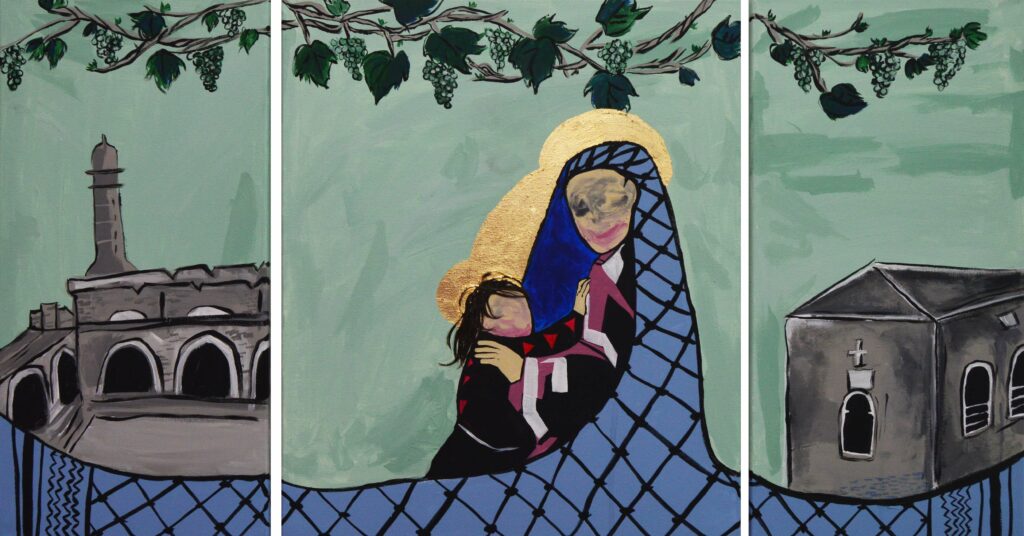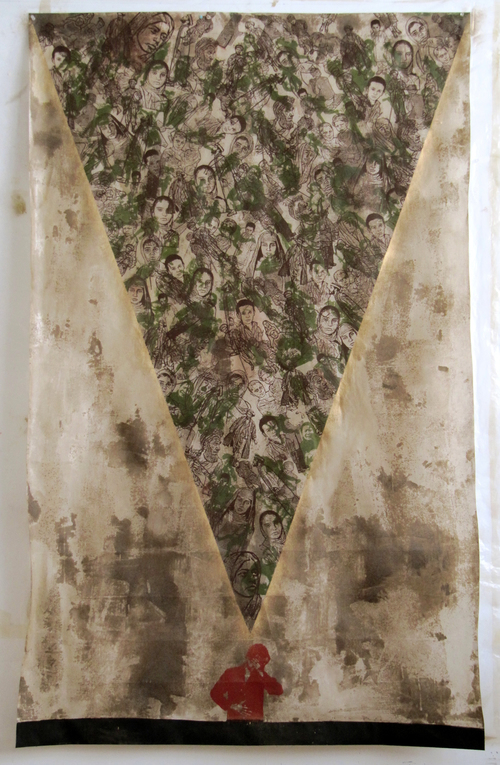Exploring a hidden history of Richmond Hill with iconic New York graffiti artist Alan Ket.
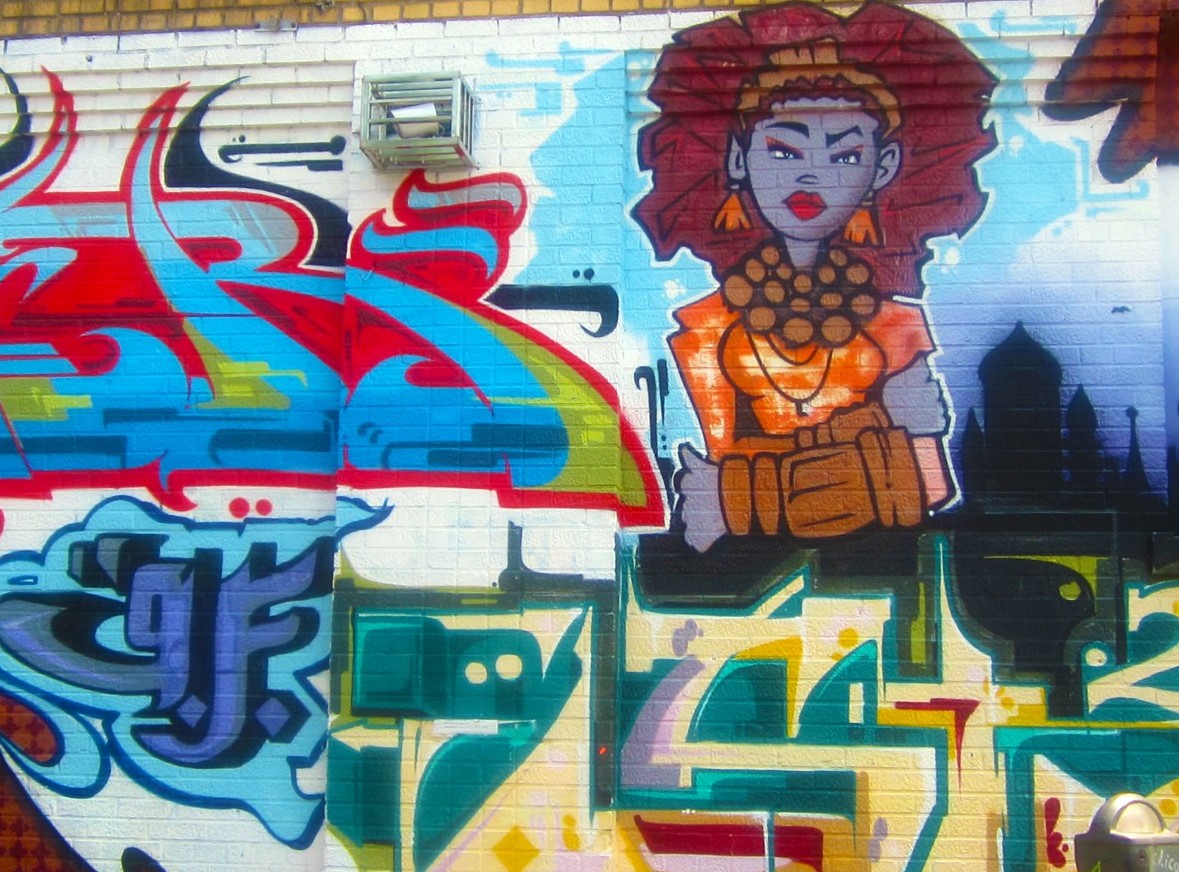
June 28, 2012

Alain “Ket” Mariduena first gained international notoriety after a 1990 profile in the Videograf series. A bookish young man, bespectacled face obscured by a black Mets cap and blue bandana, peers intensely at the camera. “Graffiti’s about bombing—trains. Not streets, not fucking trucks, not highways. It’s about trains.” A break beat triggers, and the film cuts to an empty underground station. The kid with the bandana—Ket—and his crew wave their hands quickly and silently as words materialize on doors and windows. One paints crouching with a furry orange monster mask on. When the train workers finally show up, the gang slides away on the darkened tracks. To the uninitiated, it is like watching a forbidden magic show. But to writers in Chicago, LA, Paris—and even NYC itself—these provocative scenes meant something else: New York subway bombing culture, first captured in Harry Chalfant’s 1983 documentary Style Wars, and battered by harsh anti-graffiti laws, had survived.
Seventeen years later, in 2007, Ket returned home from a morning walk to find police waiting for him with a warrant. He was arrested. Eight photo albums and his laptop were taken, and he was later charged with 14 criminal counts including trespass and vandalism. As an inactive writer in his thirties, this was surprising to him; Ket no longer frequented the subway tunnels. He had started his own magazine and now worked in publishing. But with his friend, designer, and graffiti enthusiast Marc Ecko, he, in 2005, had helped launch Getting Up, a graffiti video game for Atari. When the Bloomberg administration revoked a permit for the Getting Up block party (where replica trains would be painted) Ecko sued the city, and won. The arrest made more sense as a message. With his continued advocacy of graffiti and his new, corporate relationships, Ket had become more of a threat than he ever had been writing on trains.
An international campaign raised money and awareness about the case as the proceedings ambled on. Throughout his ordeal, Ket continued his work. He assembled and released several important graffiti collections, including New York City—Black Book Masters (2007), Rockin’ it Suckers: New York City’s Most Wanted Graffiti Vandals (2010) and Street Art: The Best Urban Art from Around the World (2011).
Facing decades in prison, his lawyers negotiated down; he pled to three felonies and was not incarcerated. The slogan for his campaign, “The Walls Belong To Us,” bravely affirms urban democracy and art as human expression. It is appropriate; it is how Ket lives.
I moved to Richmond Hill, in Queens, seven years ago. I became familiar with its geography, the immigrant communities, the old Irish bars to which I would not go. There were however, I sensed, other dimensions I could not see so easily. In the mid-nineties Ket had founded Stress, an important hip-hop periodical that covered race, politics, graffiti, and broke stories on locals like Jay-Z. Stress was based in Hollis and I was sure that Ket would know the hidden stories—the significance of the names, lots, tunnels, and trains that I passed everyday. I asked him to join me one morning, when the light was strong, to tour the side streets, main avenues, and depots.
Ket picks me up on 130th Street and 92nd Avenue. I am surprised to find out that he, as a young writer, before Stress and Videograf, had been drawn here, attracted by the miasma of J, A, E and LIRR train lines which run above and beneath Jamaica, Hillside and Liberty Avenues. Twenty-five years ago, Ket bombed trains in Richmond Hill.
In 1985, the elevated J train, coming from Brooklyn, ceased traveling on Jamaica Avenue past 121st in Queens. A underground tunnel was constructed, and in 1988, the J began using it to complete two additional subway stops. For several years during this process, resting J trains were stored in a secluded, open-air yard on 130th Street, which was guarded only by a pair of fences. Such easy access to Brooklyn trains drew Ket and his partners Venn, Reas, and Ghost to Richmond Hill, the territory of older writers AZ and RAM 707. From a dead end street, Ket and his friends could easily access the “lay up”—the place where trains were rendered immobile. In the late eighties, he was a janitor at a nearby nursing school and would travel here by bus during lunch to paint in solitude. Once, he and his friends unexpectedly bumped into local writers Demer, WW, and Poes between the cars. A confrontation ensued, and a machete was brandished. Eventually everyone decided there was enough train space to go around.
When the “lay up” is on the elevated lines, writers have to climb upwards, or enter the station like riders and jump down on the tracks to get to the trains. On Jamaica Avenue and 115th Street, Ket describes how the beams can be scaled to gain access. The beams can range in width and height and are in various states of decay. It requires great physical strength and agility to maneuver up.
Once on the elevated tracks, there are several places to paint. For the piece shown, a writer would paint with one hand, using the other for support, all while wedged in the ledge. “They stopped halfway,” Ket notes, smiling. “In Europe they would have painted down the whole length.”
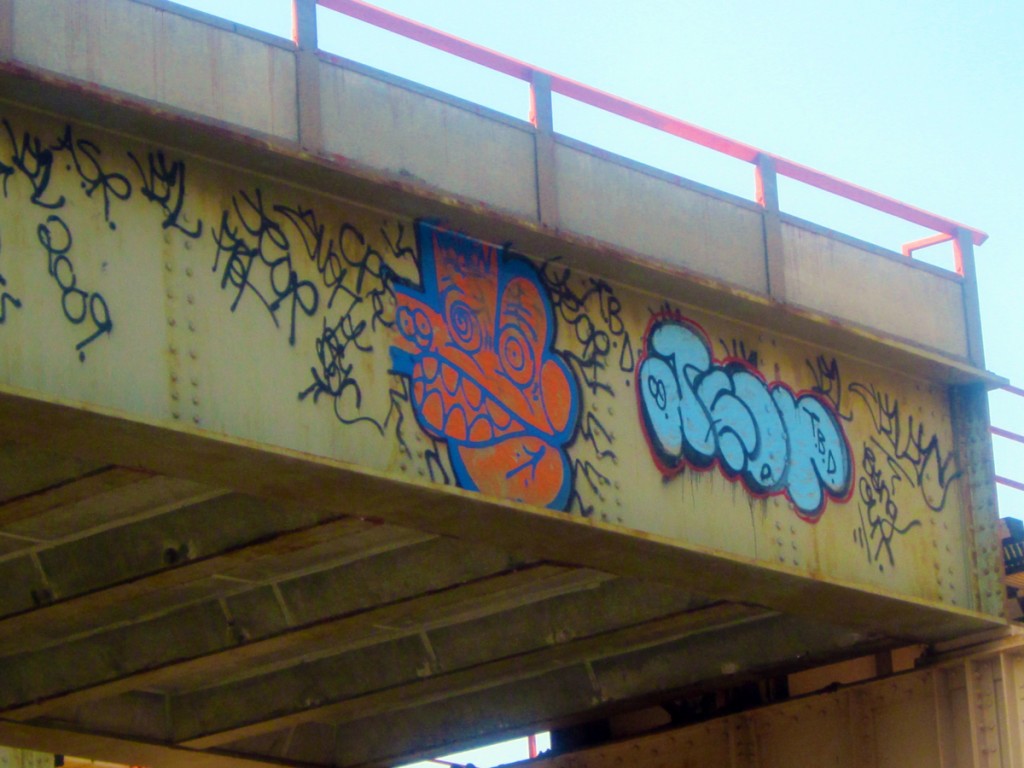
On 115th Street, Ket recalls an incident a decade ago while on a midnight mission with a group of Manhattan writers. The writer LES, climbing, got his foot stuck as he reached the top. He eventually lost strength and fell to the ground, breaking every bone on one side of his body. LES landed in middle of the street and told the police who arrived, he was the victim of a car accident. Finding spray paint in his bag, the police sent him to Jamaica hospital and went searching for others. Ket, coming down the tracks from the other direction, was forced to hang underneath the structure while police searched, learning only much later LES had fallen. On Jamaica and 144th, Ket spots an LES tag in a doorway. He must have come back after he recovered.
In the nineties, this LIRR train yard at Liberty Avenue and 188th Street welcomed writers, since there was no gate or fence guarding the lot. During one wintery session, police arrested his friends, who were sleeping in the car while he painted. As the police went onto the tracks, guns drawn, Ket fled. They tracked him down the train by his prints in the snow. He eluded them by shuffling alongside the lip of the trains and eventually jumped into an unsealed garbage unit. There he waited undetected while listening to the walkie-talkie exchanges. Several hours later, he jumped a fence and took a cab home, realizing later that he had lost his camera with recent photos from his daughter’s first birthday party.
On an industrial strip at Liberty Avenue, Ket spots a gem. “That is thirty years old,” he says, pointing to the KAP letters we see on the garage door of an automotive school. “I met him in the eighties before he retired,” he says, adding: “the tag under it must be even older.” I am amazed that he spotted the slight markings in his peripheral vision while driving. Does he observe architecture or the color or texture of building materials? “To me, everything is a surface,” he says.
On 110th and Liberty, we stop at some unused LIRR tracks with some overgrowth. I’ve passed under them many times. However, on one epic night, the 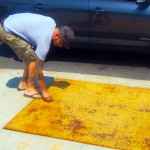 unused tracks became a lever by which Ket, Sento, and Duel could use to get up to the elevated A train, which runs directly above, and is 10-15 feet higher the J train. Ket takes a picture to memorialize that night. “It was an obstacle course,” he explains.
unused tracks became a lever by which Ket, Sento, and Duel could use to get up to the elevated A train, which runs directly above, and is 10-15 feet higher the J train. Ket takes a picture to memorialize that night. “It was an obstacle course,” he explains.
In a location a few blocks away, Ket points out an inconspicuous hatch that leads down into an underground train facility with over four parallel tracks. He recalls climbing the ladder and bursting out of this hatch while being chased. The hatch leads directly to the trains. The familiar rumble of the subway is amplified when the hatch is opened. Ket asks me not to disclose its exact location, “so no one does anything stupid.”
After we met, Ket went home and found a photo of a train he painted in early nineties at the underground station accessed by the yellow hatch.
In the days after our walking tour, the city felt to me like a mythical dystopia. Writers were brave, almost mad; they dangled between elevated tracks and descended ladders into subterranean labyrinths. They did so to record their existence, with flair, as if to say “I have not died yet. And I am an interesting person.” They were chased and hounded for it. Writers and erasure, in conflict, in the heavens and the underworld of Richmond Hill. I now had another set of coordinates with which to measure my surroundings.

